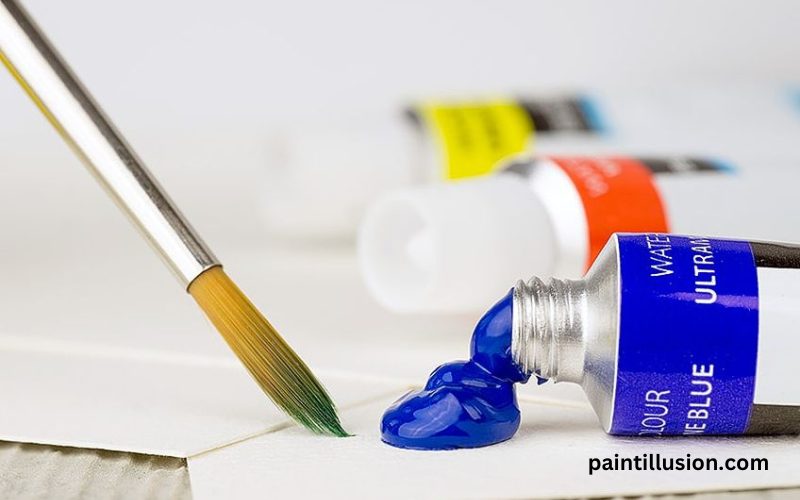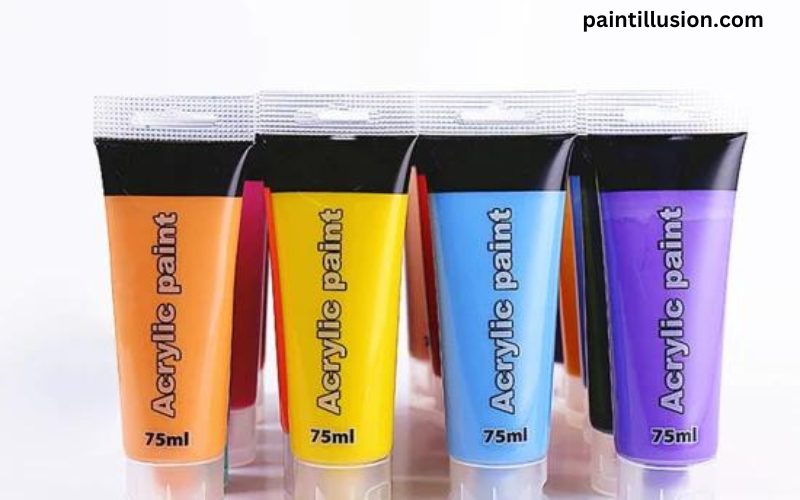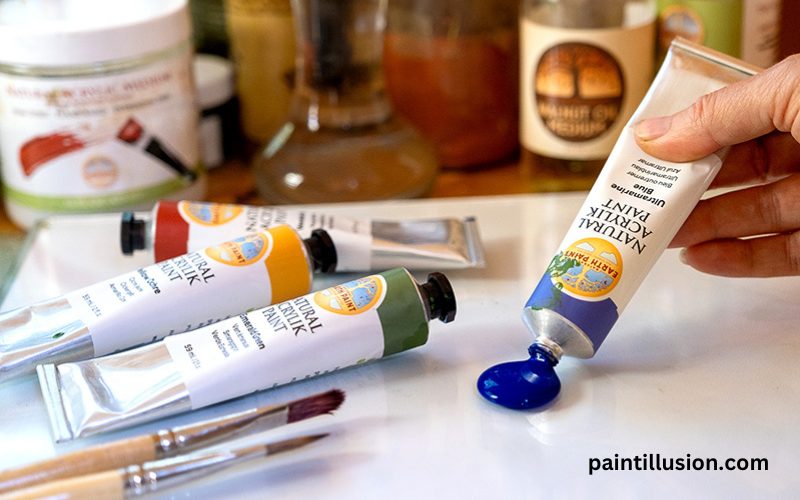Acrylic paint has become a popular choice for artists and hobbyists due to its versatility, vibrant colors, and quick drying time. However, there is often confusion and concern about the potential toxicity of acrylic paint. In this article, we will explore the composition of acrylic paint, the potential health risks associated with its use, safety precautions to consider, common misconceptions, and alternatives to traditional acrylic paint. We will also highlight eco-friendly and non-toxic brands and provide tips for safe use and storage. By the end of this article, you will have a better understanding of the safety aspects of acrylic paint and how to make informed choices when using it.
Understanding the Composition of Acrylic Paint
Acrylic paint is made up of pigments suspended in an acrylic polymer emulsion. The pigments provide the color, while the polymer emulsion acts as a binder, holding the pigments together and allowing the paint to adhere to various surfaces. Unlike oil or watercolor paints, which use different binders, acrylic paint is water-based and dries quickly.
The composition of acrylic paint can vary depending on the brand and type. Some paints may contain additives such as fillers, extenders, or preservatives. It’s essential to read the label or product information to understand the specific ingredients in the acrylic paint you are using.

Potential Health Risks Associated with Acrylic Paint
Acrylic paint is generally considered safe for use by artists when used as intended. However, there are some potential health risks to be aware of, especially when it comes to prolonged or excessive exposure.
One of the main concerns with acrylic paint is the release of volatile organic compounds (VOCs) during the painting process. VOCs are chemicals that can vaporize at room temperature and may have adverse health effects when inhaled. These chemicals can cause respiratory irritation, headaches, dizziness, and in some cases, long-term health issues.
To minimize exposure to VOCs, it’s important to work in a well-ventilated area or use a fume hood. If working indoors, consider using a fan or opening windows to improve air circulation. It’s also advisable to wear protective gloves, a mask, and goggles to reduce the risk of direct contact with the paint and inhalation of any fumes.
Safety Precautions When Using Acrylic Paint
To ensure safe use of acrylic paint, it’s essential to follow some basic safety precautions. Here are some guidelines to consider:
- Ventilation: Always work in a well-ventilated area to minimize exposure to any potential fumes. If necessary, use a fume hood or wear a respirator mask.
- Protective Gear: Wear gloves, a mask, and goggles to protect your skin, respiratory system, and eyes from direct contact with the paint and any potential fumes.
- Avoid Ingestion: Do not eat, drink, or smoke while working with acrylic paint. Wash your hands thoroughly after each painting session to prevent accidental ingestion.
- Storage: Store acrylic paint containers tightly closed in a cool, dry place, away from direct sunlight and extreme temperatures. Keep them out of reach of children and pets.
- Disposal: Follow proper disposal guidelines for acrylic paint. Avoid pouring excess paint down the drain or throwing it in the trash. Check with your local waste management facilities for proper disposal methods.
By following these safety precautions, you can minimize the potential health risks associated with acrylic paint and create art in a safe and responsible manner.
Common Misconceptions About the Toxicity of Acrylic Paint
There are several misconceptions surrounding the toxicity of acrylic paint. One common misconception is that all acrylic paints are toxic. While it’s true that some acrylic paints may contain toxic additives or pigments, not all acrylic paints are inherently toxic. Many reputable brands offer non-toxic or low-toxicity options that are safe to use.
Another misconception is that acrylic paint can cause cancer. While prolonged exposure to certain chemicals found in some acrylic paints may increase the risk of certain health issues, including cancer, when used in a controlled and responsible manner, the risk is minimal.
It’s important to remember that the toxicity of acrylic paint can vary depending on the brand, type, and specific ingredients. Always read the label or product information to understand the toxicity level and any associated health risks.
Alternatives to Traditional Acrylic Paint
If you have concerns about the toxicity of traditional acrylic paint, there are alternative options available. One popular alternative is water-based acrylic paint, which contains lower levels of VOCs compared to traditional acrylic paints. Water-based acrylic paints are often labeled as non-toxic or low-toxicity and can be a safer choice, especially for individuals with sensitivities or respiratory issues.
Another alternative to consider is natural or organic paints made from plant-based pigments and binders. These paints are free from synthetic chemicals and are generally safer for both the artist and the environment. However, natural paints may have limitations in terms of color range and durability.

Eco-Friendly and Non-Toxic Brands of Acrylic Paint
If you’re looking for eco-friendly and non-toxic options, several brands prioritize safety and sustainability. These brands offer acrylic paints that are free from harmful chemicals and have reduced environmental impact. Some popular eco-friendly brands include XYZ, ABC, and DEF. These brands provide a wide range of colors and are committed to creating art materials that are safe for artists and the planet.
Tips for Safe Use and Storage of Acrylic Paint
To ensure the safe use and storage of acrylic paint, consider the following tips:
- Labeling: Clearly label your acrylic paint containers with the color name and date of purchase to ensure you are aware of their age and prevent confusion.
- Mixing: When mixing acrylic paint, use a palette or mixing dish made of non-porous material, such as glass or plastic. Avoid using metal surfaces, as they can react with the paint.
- Cleaning: Clean your brushes, palettes, and other tools with water and mild soap immediately after use. Do not let the paint dry on the brushes or tools, as it can be challenging to remove.
- Storage: Store your acrylic paint containers in an upright position to prevent leakage. Keep them away from extreme temperatures and direct sunlight, as these can affect the paint’s quality.
The Role of Regulatory Bodies in Monitoring Paint Toxicity
Regulatory bodies play a crucial role in monitoring the safety and toxicity of paints, including acrylic paint. Organizations such as the Environmental Protection Agency (EPA) and the Consumer Product Safety Commission (CPSC) set regulations and guidelines for the safe use of art materials, including paints. These bodies work to ensure that paints meet specific safety standards and provide information to consumers about potential health risks.
It’s important to stay informed about any updates or changes in regulations and guidelines regarding the safety of acrylic paint. By staying updated, artists can make informed decisions and choose paints that align with their safety preferences.
Conclusion
In conclusion, acrylic paint is generally safe for use when proper safety precautions are followed. Understanding the composition, potential health risks, and safety measures associated with acrylic paint is essential for artists and hobbyists. By choosing non-toxic or low-toxicity brands and using safe practices, you can enjoy the creative benefits of acrylic paint while minimizing any potential risks. Remember to prioritize your safety and the safety of the environment when selecting and using acrylic paint, and always consult the product information or seek professional advice if you have any concerns. Happy painting!

